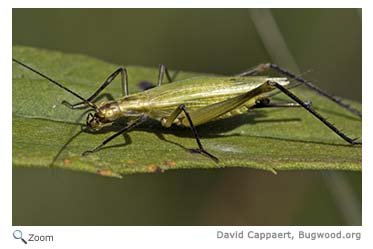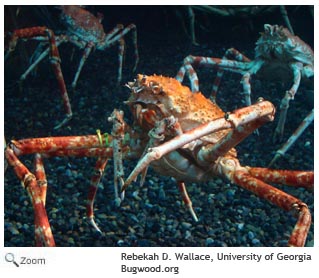 The organisms in this phylum make up more than 75% of all the life on Earth. This phylum includes insects like butterflies and beetles, crustaceans like crabs and lobsters, and chelicerates like spiders and scorpions. The organisms in this phylum make up more than 75% of all the life on Earth. This phylum includes insects like butterflies and beetles, crustaceans like crabs and lobsters, and chelicerates like spiders and scorpions. Arthropods are found in all parts of the world in a wide variety of environments, from the deep sea to the frozen arctic regions. Over 800,000 species of arthropods have been identified, but scientists estimate that there may be tens of millions of species in this phylum, many of them yet to be discovered! Arthropods range in size from microscopic to the Japanese giant spider crab with a 12-foot span from left front leg to right front leg! The word arthropod is a combination of two Greek words - arthro meaning jointed and pod meaning foot. All arthropods have jointed legs, claws, and body segments! Arthropods have segmented bodies. Each body segment usually has a pair of appendages. The appendages can be antennae, wings, legs, or mouthparts! Body segments are connected by movable joints. Each body segment is covered with a hard exoskeleton called a cuticle. The cuticle is made of chitin. Chitin is the same material that fingernails are made from. Chitin is secreted from the arthropod's skin. Once it forms, the cuticle does not grow. When arthropods grow, they molt or shed their cuticle so a new, larger cuticle can form. The cuticle protects arthropods from dehydration and predators and serves as an attachment site for muscles.  Most arthropod's bodies have three sections - the head, the thorax, and the abdomen. The thorax is the part of the body between the head and the abdomen. In some species of arthropods, the head and the thorax are one section called the cephalothorax. Most arthropod's bodies have three sections - the head, the thorax, and the abdomen. The thorax is the part of the body between the head and the abdomen. In some species of arthropods, the head and the thorax are one section called the cephalothorax. Arthropods have an open circulatory system. In an open circulatory system, blood isn't transported in the body through veins and arteries; it flows freely within body cavities and makes direct contact with the organism's internal tissues and organs! Most arthropods that live in the water have gills. Arthropods that live on land have a series of tubes throughout their body called a tracheae. Arthropods are bilaterally symmetrical, that means that if you sliced them from top to bottom, each half would be exactly the same! There are four subphylums in the arthropoda phylum.
|
||||||||||||

